International Relations: April 2024 UPSC Current Affairs | UPSC Mains: International Relations PDF Download
India Rejects China’s Claim Over Arunachal Pradesh
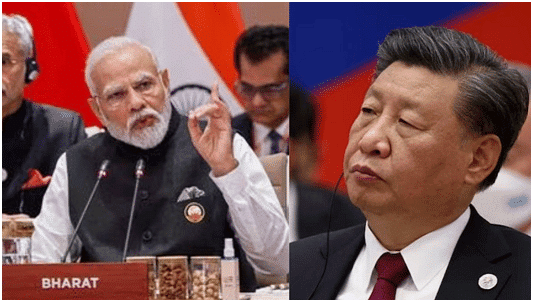
Context
China recently renamed certain locations in Arunachal Pradesh, a move India dismissed, asserting that assigning "invented" names doesn't change the fact that Arunachal Pradesh is an integral part of India and always will be.
- The Chinese Ministry of Civil Affairs issued its fourth list of standardized geographical names in Zangnan (the Chinese term for Arunachal Pradesh), which Beijing considers part of south Tibet. India strongly reacted similarly in April 2023 when China released its third list of standardized names for 11 places in Arunachal Pradesh.
What is the Border Dispute between India and China?
Background
- The India-China border dispute encompasses ongoing and intricate territorial disagreements along their 3,488-kilometre shared border. The primary areas of contention are Aksai Chin in the western sector and Arunachal Pradesh in the eastern sector.
- Aksai Chin: China governs Aksai Chin as part of its Xinjiang region, whereas India regards it as part of its Union Territory of Ladakh. This region holds strategic importance due to its proximity to the China-Pakistan Economic Corridor (CPEC) and its potential as a military corridor.
- Arunachal Pradesh: China lays claim to the entire state of Arunachal Pradesh, labeling it as "South Tibet." India administers this area as a northeastern state and views it as an integral part of its territory.
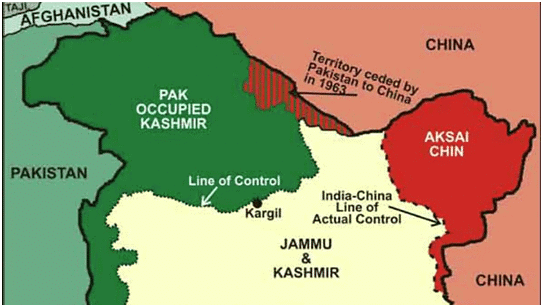
- No Clear Demarcation: The border between India and China is not clearly demarcated throughout and there is no mutually agreed Line of Actual Control (LAC) along certain stretches. LAC came into existence after the 1962 Indo-China war.
- The India-China border is divided into three sectors.
- Western Sector: Ladakh
- Middle Sector: Himachal Pradesh and Uttarakhand
- Eastern Sector: Arunachal Pradesh and Sikkim
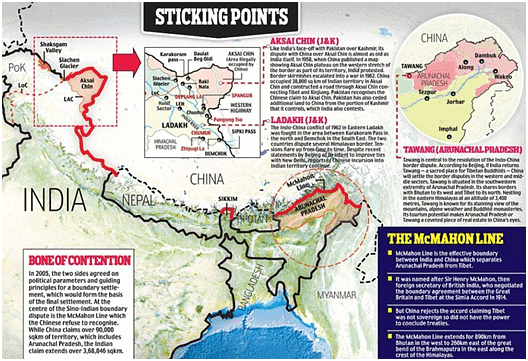
Military Standoffs
- 1962 Sino-Indian War: The border dispute has led to a number of military standoffs and clashes, including the 1962 Sino-Indian War. Both the countries have made efforts to manage the tensions, with various agreements and protocols aimed at maintaining peace along the border.
- Recent Faceoffs: Since 2013, there have been heightened frequency of serious military confrontations between India and China along the Line of Actual Control (LAC).
- The most serious recent episodes of conflict were the 2017 standoff in Doklam region, in Galwan Valley in Ladakh in 2020 and in Tawang in Arunachal Pradesh in 2022.
How is India Responding to China's Aggressive Measures?
- Global Strategic Alliances: India actively engages with like-minded nations to collectively address China's influence in the Indian Ocean Region.
- QUAD: All four member nations find a common ground of being democratic nations and also support the common interest of unhindered maritime trade and security.
- I2U2: It is a new grouping of India, Israel, the USA, and the UAE. Forming alliances with these countries strengthens India's geopolitical standing in the region.
- India-Middle East-Europe Economic Corridor (IMEC): Launched as an alternative trade and connectivity corridor to China's BRI, IMEC aims to strengthen India's presence in the Arabian Sea and the Middle East.
- International North-South Transport Corridor (INSTC): INSTC, formed by India, Iran, and Russia, spans 7,200 km, linking the Indian Ocean, Persian Gulf, and Caspian Sea. With Chabahar Port as a key node, it strategically counters China, providing an alternative to CPEC's Gwadar port.
- India’s Necklace of Diamonds Strategy:
- In response to China's String of Pearls strategy, India adopted the Necklace of Diamonds strategy, emphasising the encirclement of China by enhancing its naval presence, expanding military bases, and strengthening diplomatic ties with regional nations.
- This strategy aims to counter China's military network and influence in the Indo-Pacific and Indian Ocean regions.
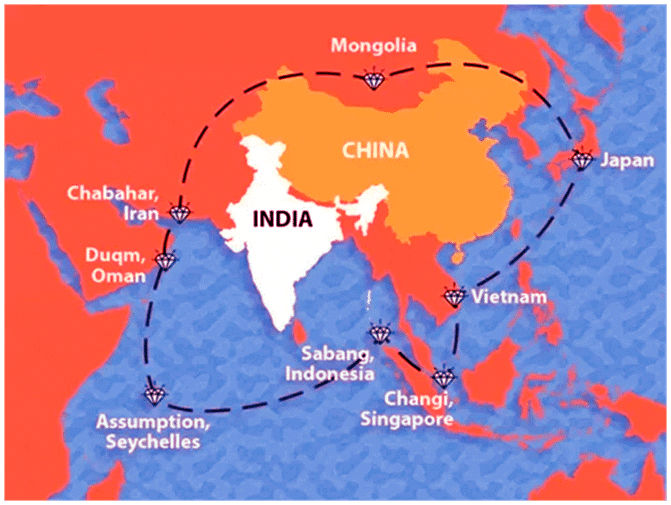
Infrastructure Projects Along Borders
- India has been actively improving its border infrastructure to fortify its position along the India-China border.
- The Border Roads Organisation (BRO) has completed 90 infrastructure projects along the India-China border, valued at Rs 2,941 crore.
- As of September 2023, 36 of these projects are situated in Arunachal Pradesh, 26 in Ladakh, and 11 in Jammu and Kashmir.
Cooperation With Neighbors
- India is actively pursuing regional partnerships with neighboring countries to counterbalance Chinese influence.
- Recently, India has supported the development of the Gelephu mindfulness city in Bhutan.
- Furthermore, India has deepened ties with Nepal through a recent power agreement signed during the visit of India’s External Affairs Minister to Kathmandu.
- In 2024, the two countries signed a bilateral agreement to export 10,000 MW of power over the next decade.
- They also inaugurated three cross-border transmission lines, including the 132 kV Raxaul-Parwanipur, 132 kV Kushaha-Kataiya, and New Nautanwa-Mainahiya lines.
- These initiatives highlight India's approach of fostering collaboration with neighboring nations to strengthen regional stability and counteract Chinese influence in the region.
Way Forward
- India must prioritize investments in upgrading border infrastructure, which includes roads, bridges, airstrips, and communication networks, to enhance mobility and response capabilities for Indian forces.
- Additionally, there is a critical need to modernize the armed forces by integrating advanced equipment, technology, and surveillance capabilities to effectively monitor and respond to border incidents.
- It is essential for India to strengthen alliances with like-minded nations and regional organizations that share concerns about China's assertiveness in territorial disputes.
- This can be achieved through intelligence-sharing, joint military exercises, and coordinated responses to regional challenges.
- India should also intensify efforts to diversify economic ties to reduce dependence on China and enhance economic resilience.
- This can be achieved by exploring trade agreements and partnerships with countries that offer alternative markets and investment opportunities.
Africa at Centre of India’s Vision for Global South
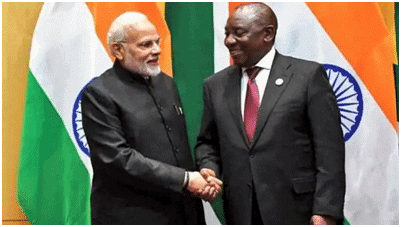
Context
India's increased emphasis on Africa has been highlighted during various state visits. This shift is significant as it reflects India's growing stature as a major global power, providing an opportunity to champion the interests of the Global South.
What is India’s Vision for the Global South?
- Championing the Global South: India perceives itself as a voice for developing nations, ensuring their concerns are acknowledged at forums such as the G20. Initiatives like the "Voice of Global South Summit" aim to establish a platform for developing countries to address shared challenges.
- Advocacy and Institutional Reform: India advocates for reforms in global institutions to better represent the interests of developing countries. This could involve reforms in international taxation, climate finance, or granting greater decision-making authority to developing nations within organizations like the United Nations Security Council.
- South-South Cooperation: India fosters collaboration among developing countries by exchanging best practices, technologies, and resources. The India-UN Development Partnership Fund, initiated in 2017, supports Southern-led sustainable development projects, prioritizing least developed countries and small island developing States.
- Climate Change Mitigation: India's vision for the Global South includes collective action to combat climate change. Through initiatives like the International Solar Alliance (ISA), India aims to promote the adoption of renewable energy in countries across Asia, Africa, and Latin America, contributing to sustainable development and climate resilience.
How can India Benefit from Prioritising Africa in its Global South Vision?
- Economic Potential: Africa represents a vast economic opportunity for India. With Indian investments in Africa reaching USD 98 billion in 2023 and trade totaling USD 100 billion, the continent serves as a crucial market for Indian businesses.
- Enhanced Strategic Ties: Africa's influence in global forums is rising, making it a strategic partner for India's global aspirations.
- India's advocacy for African representation in forums like the G20 and UNSC reflects the shared vision for inclusive global governance.
- In this regard, India has achieved several diplomatic victories, such as the African Union’s (AU) inclusion in the G20 in September 2023.
- Tapping Youthful Demographics: Africa's young population, with 60% under the age of 25 years, presents immense potential for collaboration in education, technology, and innovation.
- India's experience in skill development and education initiatives can be leveraged to empower African youth and foster sustainable development.
- Potential Resource Collaboration: Africa's rich reserves of critical minerals essential for industries like renewable energy and technology offer a significant opportunity for collaboration.
- India's expertise in sectors like renewable energy can be combined with Africa's resources to drive innovation and sustainable development.
- Stronger Geopolitical Influence: A strong partnership with Africa enhances India's strategic standing on the world stage.
- It allows India to play a more influential role in shaping global governance and addressing issues critical to the Global South.
- India's growing ties with Africa can help counterbalance China's rising influence on the continent (especially in the Horn of Africa).
What are the Challenges for India as a Leader in the Global South?
- Addressing Internal Development Challenges: Critics argue that India should prioritize resolving its domestic issues such as unequal wealth distribution, unemployment, and inadequate infrastructure before taking a leadership role in global development efforts.
- Challenges of Domestic Capacity: India's vast rural population often lacks access to quality healthcare and education, raising doubts about its capability to tackle similar issues in other developing countries effectively.
- Recognizing Diverse Needs and Priorities: The Global South comprises diverse nations with varying needs and priorities. Balancing these distinct demands can be challenging; for instance, African nations may prioritize debt relief while Southeast Asian nations focus on technology transfer. India must navigate these differences while fostering a unified approach.
- Managing Global Partnerships: India maintains robust economic ties with developed nations like the US and Japan, creating a potential conflict between advocating for the Global South and preserving these crucial relationships. This might lead India to avoid pushing for stricter trade regulations that could impact its exports to developed countries.
- Climate Change Credibility: Despite having low per capita CO2 emissions, India ranks as the world's third-largest emitter of CO2. This undermines its credibility when advocating for stricter climate actions within the Global South.
Way Forward
- Affordable Tech Innovation: India can capitalize on its expertise in frugal innovation by establishing laboratories dedicated to creating low-cost, scalable technological solutions for common challenges in the Global South, such as mobile health diagnostics or remote learning platforms.
- Rotational Leadership Model: Instead of a single leader, India could advocate for a rotating leadership council comprising representatives from various regions within the Global South. This approach promotes collaboration and inclusivity.
- Global South Satellite Network: India can spearhead the development of a network of cost-effective satellites launched and operated by a consortium of developing nations. This network would offer vital data and services to areas lacking traditional infrastructure and internet connectivity. Additionally, India can leverage advanced satellite technology like RISAT to establish a rapid disaster response network across the Global South.
- South-South Vocational Training Centers: Establishing vocational training centers in strategic locations throughout the Global South to provide skill development programs tailored to local needs. This initiative aims to empower individuals with the skills required to thrive in the job market and contribute to their respective economies.
India Stands with the Philippines in the South China Sea
Context
India's Ministry of External Affairs recently expressed firm support for the Philippines in defending its national sovereignty amidst tensions with China over the South China Sea.
- The diplomatic relations between the Philippines and India are approaching their 75th year in 2024. This milestone marks a transformative partnership between the two nations.
What is the Dispute in the South China Sea Region?
- Strategic Location:
- The South China Sea is strategically positioned, bordered by China and Taiwan to the north, the Indo-Chinese peninsula (including Vietnam, Thailand, Malaysia, and Singapore) to the west, Indonesia and Brunei to the south, and the Philippines to the east (known as the West Philippine Sea).
- It is connected to the East China Sea by the Taiwan Strait and to the Pacific Ocean by the Luzon Strait with the Philippine Sea.
- Trade Importance:
- Approximately one-third of global shipping transits through the South China Sea, with over 64% of China's maritime trade passing through this region.
- The South China Sea and Malacca Strait together facilitate over 55% of India's trade.
- Fishing Ground:
- The South China Sea is a significant fishing ground, supporting millions of people in the region with livelihoods and food security.
- It sustains a diverse marine ecosystem and fisheries, making substantial contributions to regional economies and food supplies.
- Dispute:
- The primary issue in the South China Sea dispute involves competing claims over land features such as islands and reefs and their surrounding waters.
- The parties involved in these disputes include China, Brunei, Taiwan, the Philippines, Vietnam, and Malaysia.
- China's expansive "nine-dash line" claim covers up to 90% of the sea, leading to tensions due to its construction of artificial islands and military installations, particularly in the Paracel and Spratly Islands.
- Key contested areas include the Spratly Islands, Paracel Islands, Pratas, Natuna Islands, and Scarborough Shoal.
What are the Areas of Cooperation Between India and the Philippines?
- About: India and the Philippines formally established diplomatic relations on 26th November 1949.
- With the Act East Policy initiated in 2014, the relationship with the Philippines has diversified further into political security; trade, industry, and people-to-people realms.
- Bilateral Trade: As per the official trade figures of the Department of Commerce, Government of India, bilateral trade between India and the Philippines crossed the USD 3 billion mark for the first time in 2022-23.
- India exports engineering goods, automobile parts, petroleum products, pharmaceuticals, bovine meat, oilseeds, tobacco, and groundnuts to the Philippines.
- Imports from the Philippines to India include electrical machinery, semiconductors, ores, copper, plastics, pearls, waste from the food industry, and animal fodder.
- Health and Medicine: The Philippines was the first ASEAN member to grant Emergency Use Authorization (EUA) for Bharat Biotech's Covaxin.
- Currently, the Philippines accounts for about 20% of India's pharmaceutical exports to ASEAN, with India being its largest supplier.
- Science and Technology: A Bilateral Programme of Cooperation (POC) in Science and Technology was signed in October 2019, covering areas like agricultural biotechnology, material science, and ocean science.
- India signed a deal with the Philippines in January 2022 to supply a shore-based anti-ship variant of the BrahMos supersonic cruise missile.
- This underscores the global demand for India's advanced defence capabilities.
katchatheevu island
From the Maldives occupying significant attention in India's maritime rivalry with China, to India's recent engagements with resource-rich Papua New Guinea in the Pacific Islands, joint infrastructure development on Mauritius's Agalega island, collaboration with Australia in the eastern Indian Ocean islands, and government efforts to develop the Andaman Islands to the east and Lakshadweep to the west, islands have become integral to India's evolving geopolitical strategy.
- The Katchatheevu Islands have re-entered public discourse, driven by the upcoming 2024 Lok Sabha elections, providing an opportunity to appeal to voters in Tamil Nadu, where longstanding issues involving fishermen and Sri Lanka are passionately debated.
What is Katchatheevu Island?
- About:
- The Katchatheevu Islands are a pair of uninhabited islands located in the Palk Strait, between the southeastern coast of India (Tamil Nadu) and the northern coast of Sri Lanka.
- The larger island is known as Katchatheevu, while the smaller one is called Imaravan. These islands have been historically significant due to their strategic location and their importance in the fishing activities of both India and Sri Lanka.
- Fishermen Issue:
- The ownership of Katchatheevu has been a significant point of contention between India and Sri Lanka, especially concerning fishing rights in the surrounding waters. Fishermen from Tamil Nadu have been particularly affected, as they claim traditional fishing rights in the area.
- The ceding of Katchatheevu to Sri Lanka has resulted in restrictions on Indian fishermen accessing traditional fishing grounds around the island. This has led to numerous conflicts and arrests of Indian fishermen by the Sri Lankan authorities.
- Political and Legal Stand:
- Politically, the issue of Katchatheevu has been used by various parties in India to criticise the government's stance on the matter. Legal challenges have also been raised regarding the legality of the agreements ceding the island to Sri Lanka.
- Bilateral Discussions:
- Despite the contentious nature of the issue, both India and Sri Lanka have engaged in bilateral discussions to address the concerns of fishermen from Tamil Nadu. Various proposals, such as joint patrolling and fishing zones, have been suggested to resolve the issue amicably.
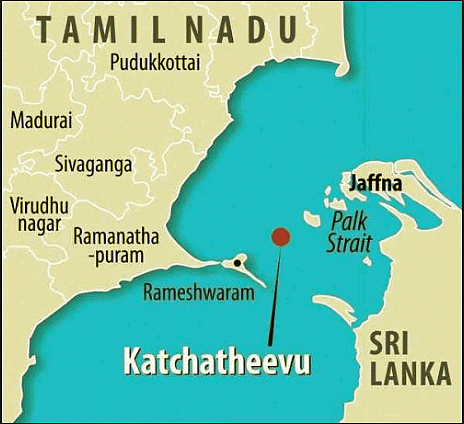
How have the India-Sri lanka Relations Evolved Regarding Katchatheevu Islands?
- Colonial Era to 19th Century:
- Sri Lanka established sovereignty over Katchatheevu by referencing Portuguese occupation from 1505 to 1658 CE as a basis for jurisdiction.
- The island was administered by the British during colonial times. Historically, it was believed to have been owned by the Raja of Ramnad (present-day Ramanathapuram) in Tamil Nadu, which later became part of the Madras Presidency.
- 20th Century Transformations:
- In the 1920s, both Sri Lanka and India asserted exclusive fishing rights over Katchatheevu, sparking a longstanding dispute that continued after both countries gained independence in the 1940s.
- In 1968, during a visit to India, the Sri Lankan Prime Minister formally raised the issue, emphasizing Sri Lanka's sovereignty over Katchatheevu.
- Subsequent discussions between Indian Prime Minister Indira Gandhi and Sri Lankan Prime Minister Sirimavo Bandaranaike led to the signing of the 1974 Agreement on the Boundary in Historic Waters, which defined a boundary placing Katchatheevu one mile off Sri Lanka's west coast based on historical evidence, legal principles, and precedents.
- Significance for Indian Fishermen:
- Article 4 of the Agreement confirmed that each state would have sovereignty, exclusive jurisdiction, and control over waters, islands, continental shelves, and subsoil on its side of the maritime boundary in the Palk Strait and Palk Bay, with Katchatheevu Island falling within Sri Lankan waters.
- Additionally, Indian fishermen and pilgrims were granted continued access to the island without requiring travel documents or visas, as per the subsequent article in the Agreement.
What is the Relevance of Katchatheevu Islands for India?
- Strategic Importance:
- Geopolitical Location: Katchatheevu is strategically located in the Palk Strait, which serves as a crucial maritime route connecting the Bay of Bengal with the Gulf of Mannar and the Indian Ocean.
- Security Concerns: Control over Katchatheevu provides India with strategic leverage in monitoring maritime activities in the region, including movements of vessels and potential security threats.
- Economic Significance:
- Fishing Resources: The waters around Katchatheevu are rich in marine resources, including fish and other seafood, which are vital for the livelihoods of fishermen from Tamil Nadu.
- Commercial Potential: Control over Katchatheevu could facilitate the development of commercial activities such as fishing, aquaculture, and tourism, thereby boosting economic growth in the region.
- Historical and Cultural Significance:
- Historical Claims: Katchatheevu holds historical significance for India, with claims of traditional fishing rights by fishermen from Tamil Nadu dating back centuries.
- Cultural Ties: The island has historical and cultural significance for the Tamil communities in India and Sri Lanka, as it is associated with the legendary Tamil sage Thiruvalluvar.
- Legal and Diplomatic Implications:
- Diplomatic Relations: Despite the cession of Katchatheevu to Sri Lanka through agreements in 1974 and 1976, the Katchatheevu issue has implications for India-Sri Lanka relations, often influencing bilateral discussions and negotiations on various matters, including fishing rights and maritime cooperation.
- International Law: The dispute over Katchatheevu raises broader questions about the application of international law, particularly concerning territorial sovereignty, maritime boundaries, and the rights of coastal states.
- Territorial Waters: The island's possession by Sri Lanka has implications for India's territorial waters and Exclusive Economic Zone (EEZ) in the region.
- Humanitarian Considerations:
- Human Rights Concerns: Restrictions on fishing activities around Katchatheevu imposed by Sri Lanka have led to humanitarian concerns, including instances of arrests, harassment, and loss of lives among Indian fishermen.
- Need for Resolution: Addressing the Katchatheevu issue is essential from a humanitarian perspective to ensure the welfare and safety of fishermen and their families who depend on the waters for their sustenance.
- Security and Anti-Smuggling Operations:
- Smuggling Activities: Katchatheevu's proximity to the Indian coast makes it a potential hub for smuggling activities, including arms, drugs, and contraband.
- Preventing Smuggling Activities: The island's possession by Sri Lanka has implications for India's ability to monitor and curb such activities in the region.
- India has expressed concerns over the use of Katchatheevu for smuggling and other illegal activities that could pose a security threat.
Despite its modest dimensions, Katchatheevu Island presents a multifaceted challenge in the relations between India and Sri Lanka, owing to its strategic position, implications for fishing rights, and cultural importance. The transfer of the island to Sri Lanka has strained bilateral relations, underscoring the necessity for a comprehensive solution that addresses maritime security, fishermen's livelihoods, and the historical sentiments of both countries. It is imperative to resolve this longstanding dispute through continuous dialogue, mutual comprehension, and innovative approaches to resource-sharing to promote cooperation and stability in the region.
Eurasian Economic Union
Context
During his two-day visit to India, the Foreign Minister of Belarus declared that India is considering starting talks for a free trade agreement (FTA) with the Eurasian Economic Union (EAEU).
India Seriously Considering India-Eurasian Economic Union Free Trade Agreement (FTA)
- The remarks indicate a deepening political will to strengthen economic relations between India and Belarus, which has been one of the key regional supporters of Russia in the backdrop of the Ukraine-Russia conflict.
- Under FTA, two or more countries agree to provide preferential trade terms, tariff concessions, etc. to the partner country.
About Eurasian Economic Union (EAEU)
- Background: The Eurasian Economic Union was created in part in response to the economic and political influence of the European Union (EU) and other Western trade agreements.
- About: The EAEU is an international economic union and free trade zone comprising countries located in central and northern Asia and Eastern Europe.
- Objective: To increase cooperation and economic competitiveness for the member states, and the promotion of stable development to raise the standard of living in member states.
- Governing Body: The EAEU heads of state comprise a governing body known as the Supreme Eurasian Economic Council.
- Executive body: Known as the Eurasian Economic Commission, an analog to the European Commission, it oversees day-to-day operations.
- Member countries: Russia, Armenia, Belarus, Kazakhstan, and Kyrgyzstan.
- No Common Currency: Unlike the European Union (EU), the EAEU does not share a common currency.
Limitations of Eurasian Economic Union (EAEU)
- Internal disagreements and Uneven Markets: Members of the union have different goals, and there are recurrent clashes between members over the application of non-tariff regulations and accusations of protectionism.
- Limited Economic Success: Failure In the eight years since its creation, the EAEU has failed to establish itself as a profitable economic alliance or attract new member states.
- Uneven Resolution of Benefits and Duties: The resolution of benefits and duties within the alliance has consistently favored Russia, posing ongoing challenges for Kazakhstan, Armenia, and Kyrgyzstan.
GCC’s Vision for Regional Security
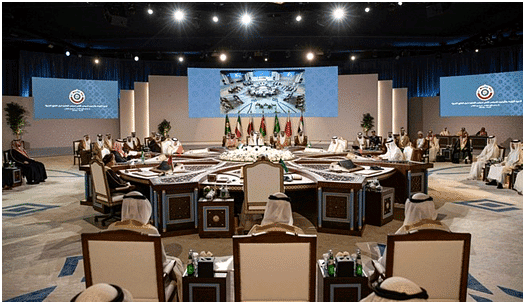
Context
The Gulf Cooperation Council (GCC) announced the launch of its 'Vision for Regional Security', a new initiative formulated by the six-country bloc earlier.
Dimension-Issues covered in the vision
- There are several topics that the vision covers, outlined in 15 specific points, such as issues relating to regional security and stability, economy and development, as well as climate change.
- Israel issue: One geopolitical challenge that the vision seeks to resolve is the issue of Israel's occupationof the Palestinian territories, reaffirming the GCC's commitment to the Arab Peace Initiative that was first endorsed by the Arab League in 2002, despite Bahrain and the UAE normalising relations with Israel.
- The vision also calls for the end of Israeli settlements in the occupied West Bank and nots that the conflict is a key issue destabilising the region.
- Two-State Solution: Among others, it calls for a two-State solution, the withdrawal of Israeli forces to the pre-June 1967 borders and the establishment of an independent Palestinian State with East Jerusalem as its capital.
- Nuclear policy: It also addresses nuclear non-proliferation in the region, a long-standing issue due to Iran's nuclear programme, as well as a commitment on the right to civil nuclearuse, a policy which has been sought by both the UAE and Saudi Arabia.
- Other points include addressing cyber security issues, global energy market stability, climate change and the advancement of implementing a 'circular carbon economy' and securing water security.
- The document has come at a time when the West Asian region is engulfed in a turmoil since the beginning of the Israel–Hamas War in October 2023. Its launch has provoked questions about what the security plan entails and how it will be implemented, particularly with its formation coinciding with Israel's war on Gaza and a spate of attacks on regional Red Sea shipping.
Fact Box: Gulf Cooperation Council (GCC)
- The GCC is an economic and political bloc formed in 1981, in the face of regional conflict and tensions. It includes Kuwait, Qatar, Bahrain, Saudi Arabia, the UAE and Oman, six countries with huge oil resources and some of the highest per capita GDPs in the world.
- Despite the agreement on greater economic and political integration there have been huge divergences on the goals of the GCC and differences on regional policy.
- There has been a new push for greater cooperation after the blockade on Qatar by Saudi Arabia, the UAE, Egypt and Bahrain ended in 2021 with the Al-Ula Agreement.
Financing for Sustainable Development Report 2024: UN
- Key Highlights
- High financing gap for developing countries, ranging between $2.5 trillion and $4 trillion annually.
- Finance divides: Developing countries face significantly worse terms of access to both long-term and contingency financing.
- Weak enabling environment: Policy, regulatory and tax frameworks are not sufficiently aligned with SDGs.
- Reasons for low financing of SDGs
- Rise in systemic risks have put National financing frameworks under severe stress.
- E.g., Covid 19 pandemic, Rise in frequency of disasters etc.
- Average GDP growth rates in developing countries fell to just over 4% annually (between 2021 and 2025).
- Median debt service burden for Least Developed countries (LDCs) rose to 12% in 2023.
- Other concerns: Digitization induced risks, Rising geopolitical tensions.
- Recommendations
- Building tax capacity to improve tax revenue for delivering on SDGs.
- International Development cooperation to mobilizing other financial resources.
- E.g., new approach to blended finance focused on support for sustainable trade and responsible business conduct
- Intensified action to address debt challenges of developing countries.
- Enhancing coherence between trade, investment and sustainable development.
- Funding for data and statistical systems to focus on producing actionable insights for advancing SDGs.
Switzerland to host Ukraine Peace Summit
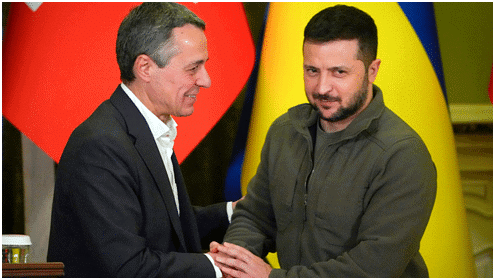
Context
Switzerland will hold a peace conference on June 15-16 following the G7 Summit in Italy, marking the third year of the Russia-Ukraine conflict. This initiative comes in response to a request from Ukraine's President Volodymyr Zelenskyy, who visited Bern, Switzerland, in January this year.
History of Swiss Mediation
- Neutrality is a foundational principle of Switzerland’s foreign policy.
- It has had a tradition of being the protecting power since the 19th century when it looked after the interests of both the Kingdom of Bavaria and the Grand Duchy of Baden during the Franco-Prussian War of 1870-71.
- It acted as the protecting power during the two World Wars, and held nearly 200 protective power mandates during World War II.
- Switzerland represented India’s interests in Pakistan and Pakistan’s in India between 1971 and 1976.
- Over the last two decades, Switzerland has been the protecting power between Saudi Arabia and Iran, the US and Iran, Russia and Georgian, and other pairs of mutually hostile governments.
- The country also has a history of hosting negotiations or mediating in conflicts. It hosted talks between the government in Colombo and the Liberation Tigers of Tamil Eelam in 2006.
- During the Russia-Ukraine war, however, Switzerland has leaned towards Ukraine, and has joined the Western sanctions regime against Russia.
What are the Goals of the Summit?
- During President Zelenskyy’s visit to Bern in January, 2024, Switzerland and Ukraine discussed the next steps towards a comprehensive, just and lasting peace in Ukraine.
- At Ukraine’s request, Switzerland agreed to host a high-level conference.
- The objective of the Summit is to “provide a platform for a high-level dialogue on ways to achieve a comprehensive, just and lasting peace for Ukraine based on international law and the UN Charter”.
- The conference will aim to “create a common understanding of the framework conductive to this goal and a concrete roadmap for the peace process”.
- Switzerland has invited 120 countries, including India, to participate in the conference.
Russia’s Response to the Summit
- Surprisingly, Russia has not been invited by Switzerland for the Ukraine-Russia Peace Summit.
- Russian President Vladimir Putin has said there will be no peace in Ukraine until Russia’s goals are met.
- He declared that Russia was not invited, and also stated that nothing could be decided without Moscow.
- He suggested that because there would be no Russian delegation at the conference, it could be claimed that Russia is refusing to negotiate.
- According to the Swiss foreign ministry, invitations to the June peace summit will be sent to around 120 countries in the coming weeks.
- Ignazio Cassis, head of the Swiss foreign ministry, had already stated that Russia would not be taking part.
India’s Participation in the Summit
- Prime Minister Narendra Modi’s schedule will be clear after the Lok Sabha results come in June 4.
- Once the election results are declared, the Prime Minister will be ready to travel, after the formation of the government.
- This would be the Indian Prime Minister’s first trip overseas after elections.
- Also, there are expectations that Italy will invite the PM for the G7 leaders’ summit as a guest — as has been the practice in the last five years since France invited New Delhi in 2019 and Japan in 2023.
- After the G7 leaders’ summit, the stop at the peace conference will be a “natural event” to go to for the Prime Minister.
- Zelenskyy had sought India’s support on his 10-point “peace formula”, which calls for withdrawal of Russian troops from Ukraine, release of prisoners, restoration of Ukraine’s territorial integrity, and guarantees on nuclear safety, food and energy security.
- India has sought to maintain a diplomatic balancing act between Russia and Ukraine, and it will have to calibrate its response over attendance at the peace conference.
India a Top Tier Security Partner for Australia
India-Australia Security Partnership in the Indo-Pacific Region
- In its National Defense Strategy (NDS) 2024, the Australian Government has designated India as a 'top-tier security partner' in the Indo-Pacific Region (IPR). The NDS underscores Australia's commitment to fostering practical bilateral and multilateral cooperation, defense industry collaboration, and information sharing with India.
- Quadrilateral Security Dialogue (Quad): Australia, along with India, Japan, and the US, actively engages in the Quad to address pressing challenges in the Indo-Pacific.
- Bilateral Cooperation: The two nations elevated their bilateral relationship to a Comprehensive Strategic Partnership (CSP) level in 2020.
- Joint Declaration on Maritime Cooperation in Indo-Pacific (2020): Emphasizes the promotion of peace, security, stability, and prosperity in the Indo-Pacific.
- Defense Cooperation: The Mutual Logistics Support Arrangement and Defense Science and Technology Implementing Arrangement provide a framework to enhance defense cooperation. AUSTRAHIND is a joint military exercise conducted by both countries.
- Significance of India-Australia Partnership in the Indo-Pacific Region: Both nations share interests in upholding a rules-based order, ensuring freedom of navigation, respecting international laws, collaborating on emerging technologies and critical minerals, and maintaining regional power balance in response to Chinese assertiveness.
Other Aspects of India-Australia Ties
- Economic Cooperation: A bilateral Economic Cooperation and Trade Agreement was signed in 2022.
- Clean Energy Cooperation: A Letter of Intent was signed in 2022 focusing on New and Renewable Technology.
- Critical Mineral Investment Partnership: In 2022, a Memorandum of Understanding (MoU) was signed between Australia's Critical Minerals Office and Khanij Bidesh Ltd (KABIL).
- Nuclear Cooperation: A Civil Nuclear Cooperation Agreement was signed in 2014.
|
88 videos|123 docs
|
FAQs on International Relations: April 2024 UPSC Current Affairs - UPSC Mains: International Relations
| 1. What is the current stance of India on China's claim over Arunachal Pradesh? |  |
| 2. Which region is at the center of India's vision for the Global South? |  |
| 3. In which sea does India stand with the Philippines against China? |  |
| 4. What is the significance of Katchatheevu Island in international relations? |  |
| 5. Which country is set to host the Ukraine Peace Summit? |  |
















